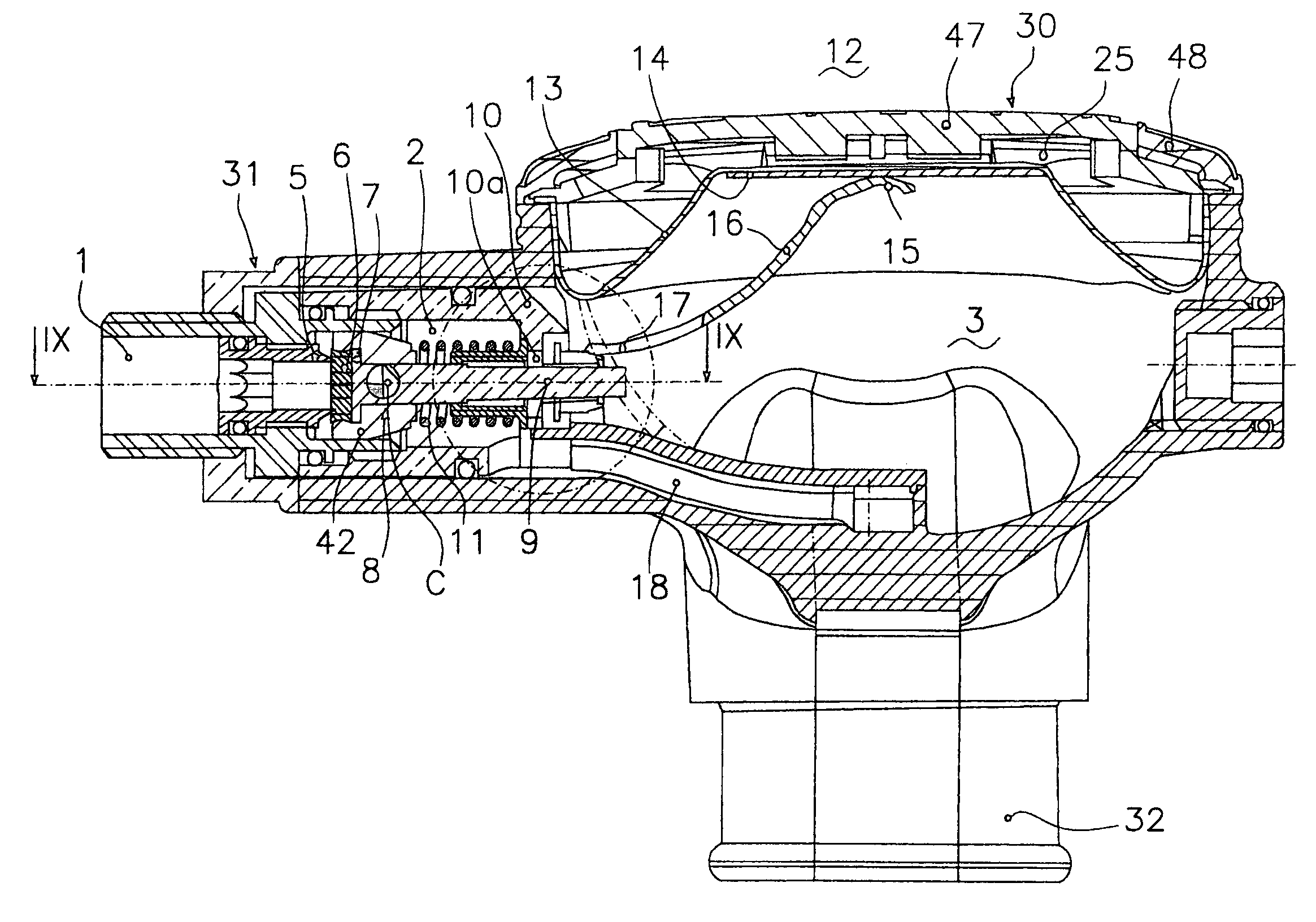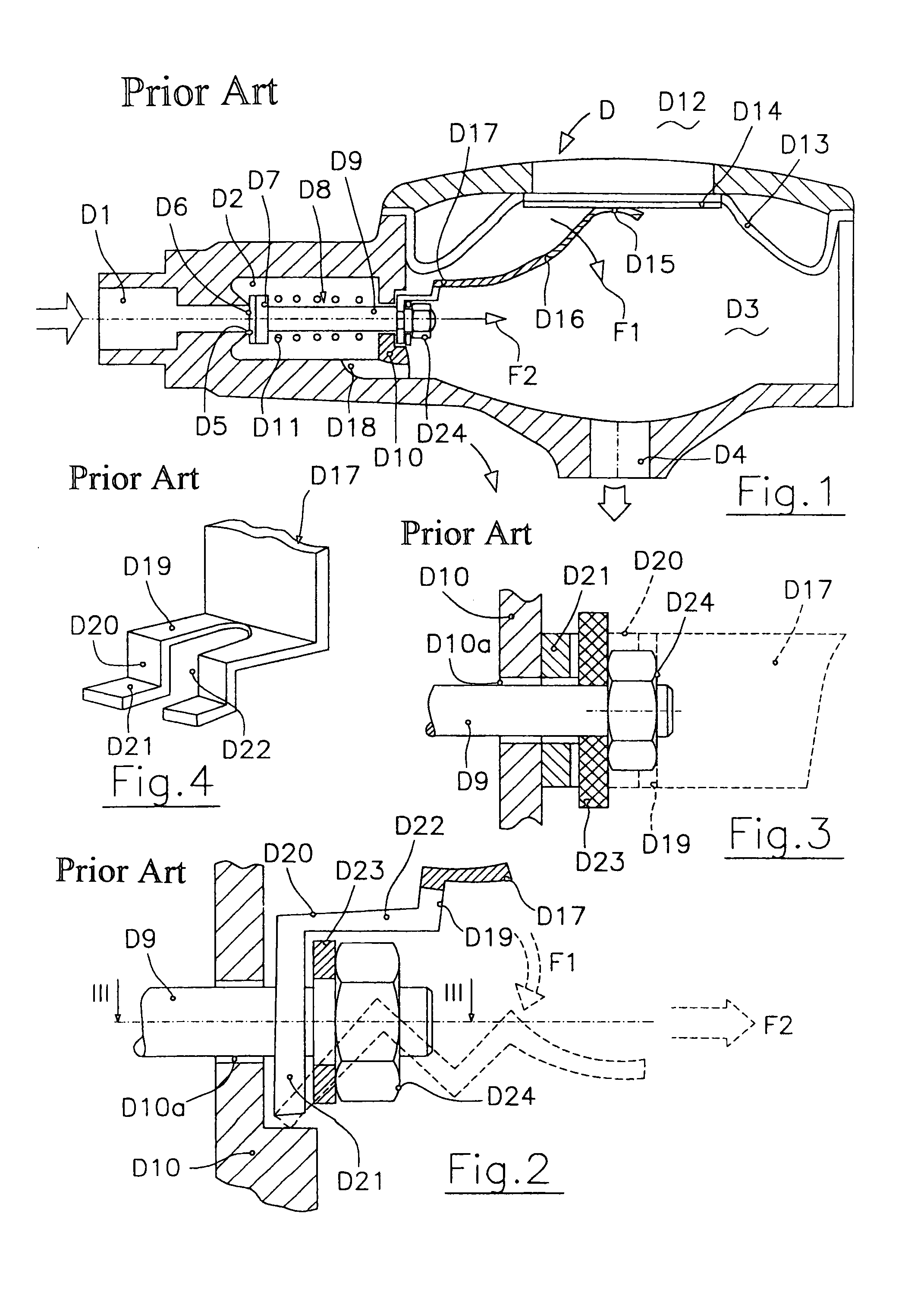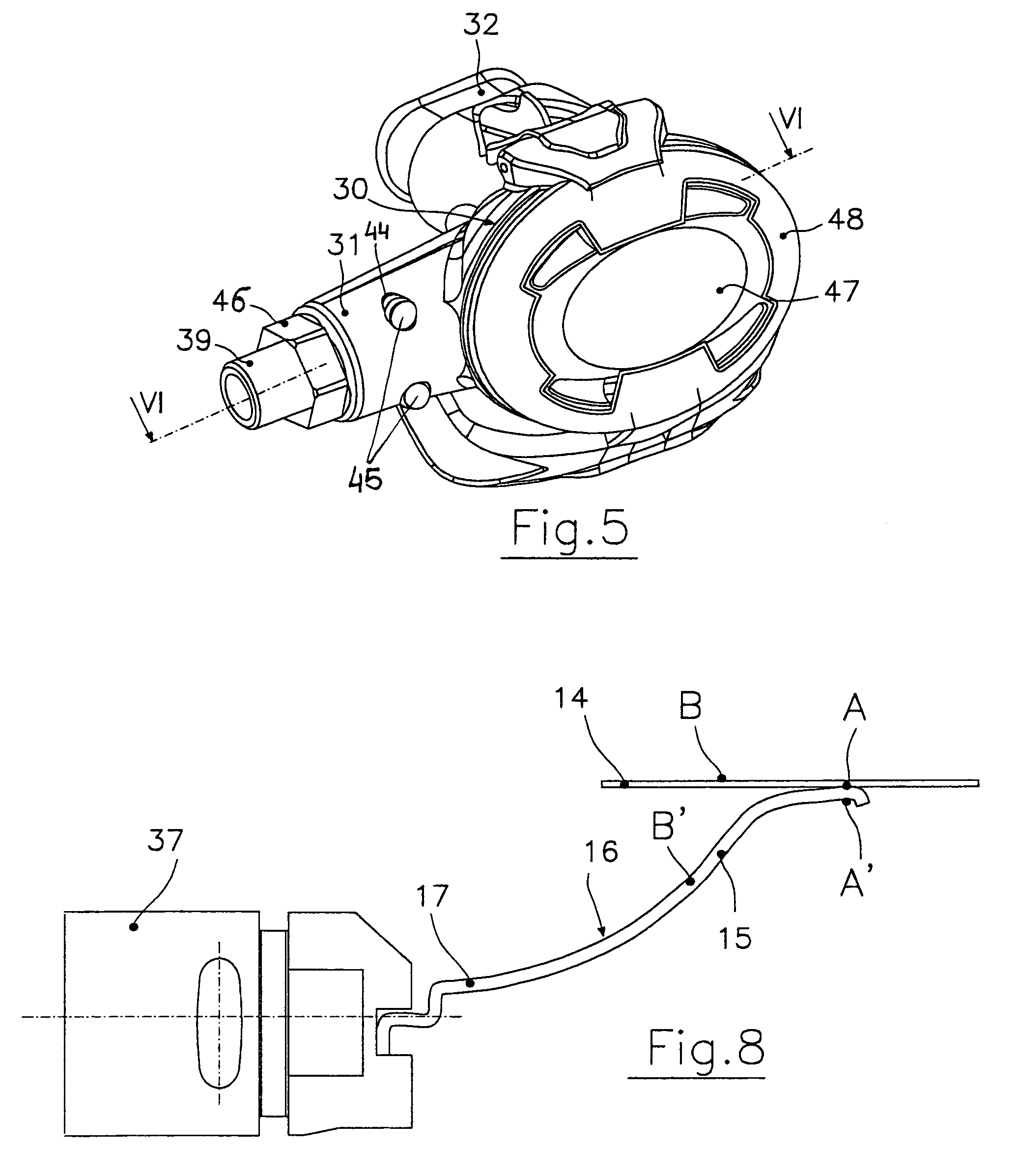Second-stage regulator for scuba divers
a technology for divers and regulators, applied in underwater equipment, breathing protection, medical science, etc., can solve the problems of requiring considerable additional inhalation effort by users, affecting their ease of breathing in limited oxygen environments, etc., and achieve the effect of less inhalation effort and greater eas
- Summary
- Abstract
- Description
- Claims
- Application Information
AI Technical Summary
Benefits of technology
Problems solved by technology
Method used
Image
Examples
Embodiment Construction
[0033]A conventional second-stage regulator D is shown, for instance, in FIGS. 1-4. The regulator has an inlet chamber D1, an intermediate chamber D2, and an outlet chamber D3 connected to a user's mouthpiece D4. Inlet chamber D1, which is at the same pressure as that of the outlet of an associated first-stage regulator, is separated from the intermediate chamber by a valve seat D5. The valve seat supports a seal D6 on a head D7 of a poppet D8. The poppet has a tail D9 passing loosely through a hole D10a in a baffle D10, between the intermediate chamber and outlet chamber. Generally speaking, a purpose of the baffle is to support a spring D11 that compresses the head of poppet D8 against valve seat D5.
[0034]The outlet chamber is separated from the external environment by a diaphragm D13. An outer end D15 of a lever D16 abuts a thin rigid plate D14 on an inner surface of the diaphragm. Another, inner end D17 of the lever is hingedly connected to the baffle and supports the tail of th...
PUM
 Login to View More
Login to View More Abstract
Description
Claims
Application Information
 Login to View More
Login to View More - R&D
- Intellectual Property
- Life Sciences
- Materials
- Tech Scout
- Unparalleled Data Quality
- Higher Quality Content
- 60% Fewer Hallucinations
Browse by: Latest US Patents, China's latest patents, Technical Efficacy Thesaurus, Application Domain, Technology Topic, Popular Technical Reports.
© 2025 PatSnap. All rights reserved.Legal|Privacy policy|Modern Slavery Act Transparency Statement|Sitemap|About US| Contact US: help@patsnap.com



